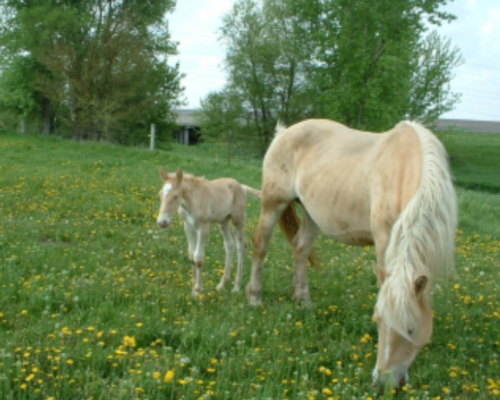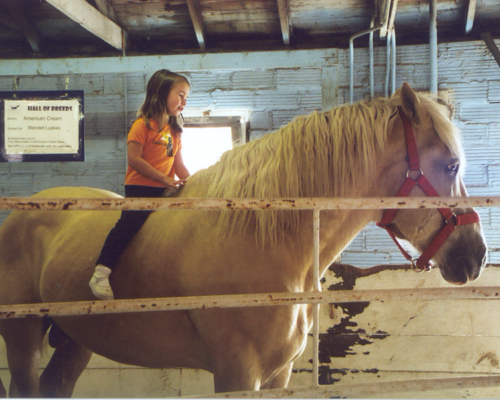Ideal mature (five years) height and weight of males (five years) is 16 to 16.3 heads and 1800 pounds and up.
Creams exhibit a refined head, well proportioned to body and wide-set, large, intelligent eyes, small expressive ears and flat nose profile. They are short coupled with well-muscled hindquarters, wide chest, good sloping shoulders, short, strong back; deep throughout the heart girth, ribs well sprung, good strong legs in proportion to body set wide apart with strong, sure feet.
Their movement is smooth and easy, pricking up feet and setting squarely on the ground. Their temperament is best described as amiable, easy going, willing to please, and trustworthy.
On recommendation of D. Phillip Sponenberg DVM, PHD> Virginia-Maryland Regional College of Veterinary Medicine and Chair of Technical Panel, American Livestock Breeds Conservancy, appendix tracking is being done. Foals from cream matings that are considered too dark colored for full registry and foals from cream to other registered deaf breads (1/2 cream) are allowed in an appendix registry so long as they meet certain requirements. From that there is an upgrade system to ensure the offspring will be mated to full creams which we believe will strengthen rather than dilute the genes and increase numbers.
Until such time as the books are closed to outside breeding, a cream mare with dark skin and light mane and tail will be accepted for foundation stock. Stallions must, however, have pink skin and white mane and tail to be accepted for registration.




